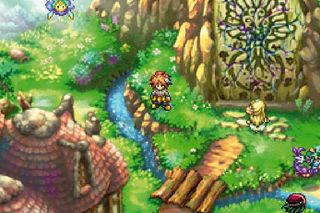Children of Mana
The long-running but unreliable action-RPG series returns with more visual beauty and confounding gameplay
Later optional quests will take you back to completed dungeons, but will change the enemy types you'll face. These are smartly designed to extract the maximum challenge from the seemingly basic combat: with a sword, a flail and a bow at your disposal, enemies can be knocked into each other - and into objects - and are likely to rebound into each other and into you, creating a bumper-car brawl of controlled chaos.

In multiplayer, these battles are even more frenetic, but the controls are so precise and the balance between blocking, direct and ranged attacks so clear that you always have a fighting chance. Item use and weapon selection are managed via those famed ring menus, and never hold up battle at all.
Monsters killed contribute to experience which levels up your character and gives you access to the more advanced equipment you find hidden around each level. It adds a sense of progression throughout the game, but does little to mask its inherent repetitiveness.
And, while it's unfair to criticize Children of Mana for not being a pure sequel to Secret of Mana, it will perhaps prove reasonable to criticize it for not finding enough variety in its pared-down, if beautifully tooled, dynamics.
Sign up to the GamesRadar+ Newsletter
Weekly digests, tales from the communities you love, and more
Former BioWare devs' new RPG Exodus will potentially age your loved ones while you're away: "Decisions a player makes will compound over a significant period"

Not even 3 months after releasing Dragon Age: The Veilguard, game director Corinne Busche is leaving BioWare following an 18-year career with EA
Most Popular
